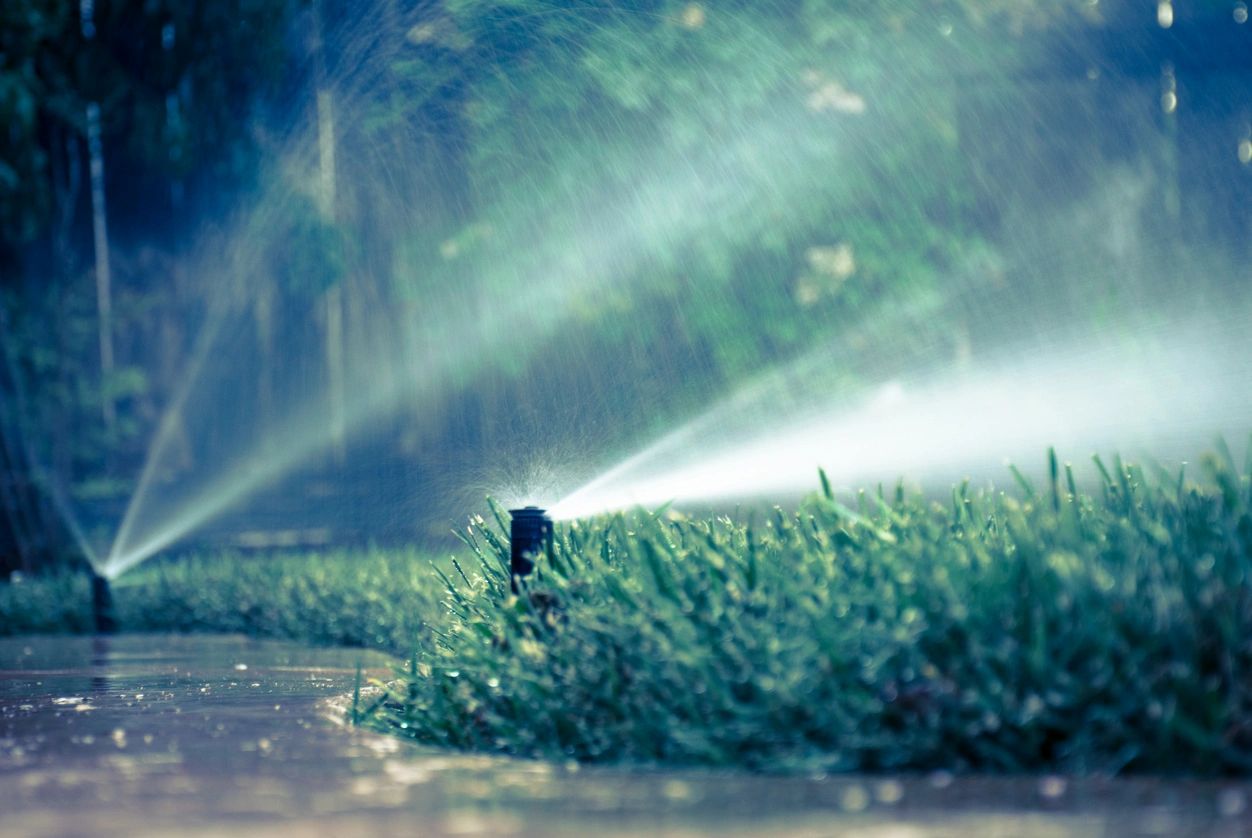Overwatering Grass Issues

Determining whether your lawn receives too much water is crucial for maintaining its health and appearance. Here are several indicators to help you assess if your lawn is overwatered:
Soggy Soil: One of the most apparent signs of overwatering is soggy soil. If the ground feels excessively wet or squishy when you walk on it, it likely means more water is present than the soil can absorb or drain away effectively.
Pooling Water: Visible pools or puddles on the lawn surface after watering or rainfall indicate poor drainage, leading to overwatering if left unchecked.
Yellowing Grass: While yellowing can sometimes indicate underwatering, consistently yellow or pale green grass can signal overwatering. Excess water can drown the roots, preventing them from absorbing nutrients properly.
Mushrooms and Mold: Fungi thrive in damp environments. If you notice mushrooms or mold growing on your lawn, especially after periods of rain or irrigation, it may indicate excessive moisture levels.
Weeds and Algae Growth: Overwatered lawns can promote the growth of weeds and algae, as these organisms often prefer moist environments.
Wilting Despite Moisture: Paradoxically, overwatered grass may still show signs of stress similar to underwatering. Look for wilting, where the grass blades appear limp and fold over, even though the soil feels wet.
Increased Pest Activity: Excess moisture can attract pests like mosquitoes, gnats, and certain lawn insects. If you notice an uptick in pest activity, it could be due to overwatering.
Runoff and Erosion: If water runs off your lawn quickly after irrigation or rainfall, it suggests that the soil is saturated and cannot absorb more water. This runoff can lead to erosion and nutrient loss over time.
Stunted Growth: Overwatered lawns may exhibit slow or stunted growth. This is because waterlogged soil can suffocate roots and inhibit their ability to uptake essential nutrients.
Foul Odors: In severe cases of overwatering, anaerobic conditions can develop in the soil, leading to foul-smelling odors resembling rotting vegetation.
Tips for Correcting Overwatering:
Adjust Irrigation Schedule: Monitor weather conditions and adjust your irrigation schedule accordingly. Consider using a rain gauge to measure how much water your lawn receives from rainfall.
Improve Drainage: If your lawn consistently retains water, consider aerating the soil to improve drainage. You can also amend heavy clay soils with organic matter to enhance permeability.
Use Proper Watering Techniques: Water deeply and infrequently rather than shallowly and frequently. This encourages deep-root growth and reduces the risk of surface runoff.
Monitor Soil Moisture: Use a soil moisture meter to gauge moisture levels in different lawn areas. This can help you adjust your watering practices more accurately.
By observing these indicators and adjusting your watering practices accordingly, you can ensure your lawn receives the right amount of water for optimal health and appearance. Regular monitoring and proactive adjustments will help you maintain a lush, green lawn while avoiding the pitfalls of overwatering.
Contact ELT Landscape if you have any more questions about your lawn or want some help with your landscape.
